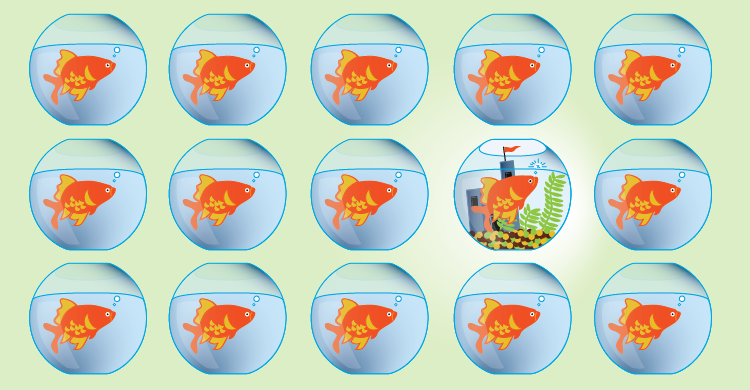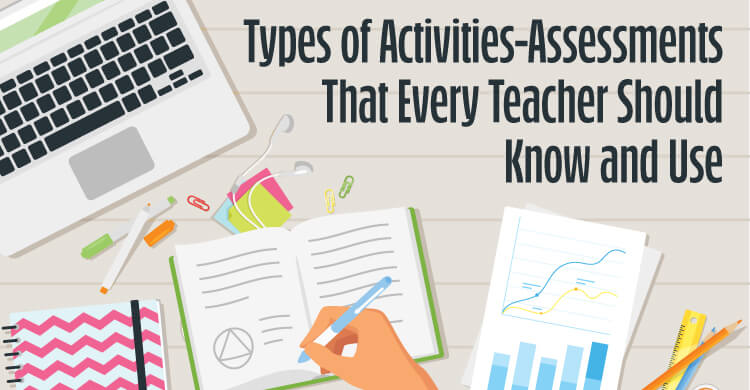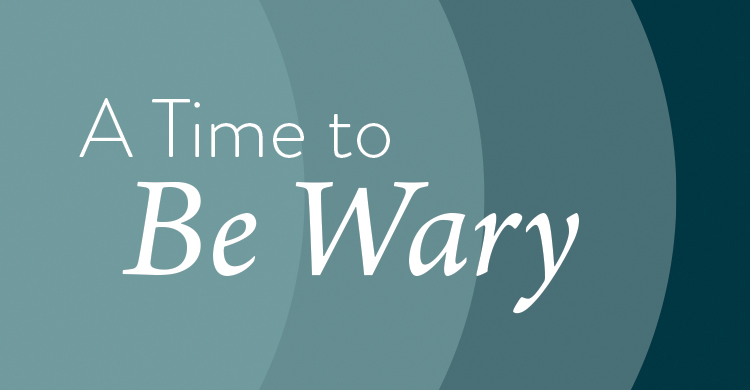In an effort to communicate more clearly, educators all over are exploring ways to provide feedback and report achievement. The move to being standards-based is intended to create a culture focused on learning, where students receive more specific information about what they understand and what they need to learn more about. We report to communicate achievement and work habits at school. This is the kind of information that has great potential to help students make deeper connections to what they are learning and increase the rigor of their school experience.
Standards-based reporting
Standards-based reporting is a way to communicate just as traditional reporting systems that use an A, B, C, D and F scale is a way to communicate. A more traditional grading system combines achievement, behavior, timeliness and other evidence in some form and is reported as one score, usually some percentage that is turned into a letter grade. Standards-based reporting identifies essential standards, or descriptions of what is intended for students to learn, and reports a certain level of proficiency on each of those standards. In addition, a standards-based report describes behaviors and work habits separately from achievement on essential standards.
This move to create a culture where learners and teachers talk and reflect about what they are learning as a means to higher grades and more proficiency versus gaining more points to achieve grades is a messy, muddy, but incredibly worthwhile journey. First, a look at how it can be a bit messy and muddy: At the top of my 4th grader’s math paper, it read -3…85%…3… There were three different numbers quantifying his achievement on this math test. More numbers adds unnecessary work for teachers who want and need to be spending more time engaging with students and designing learning experiences that help them grow. More numbers makes it even harder to understand the correlation to learning. What does getting 3 wrong, 85% right and a score of 3 out of a 4 point rubric mean? The absence of clear descriptions of those standards and varying levels of achievement can be just as confusing as combining everything together into one letter grade. In truth multiple numbers or letters on papers is often the first version of standards-based reporting– where teachers assign percentages and quantities to a 4-point scale. A 4-point scale whether it is numbers or letters (E-Exceeds Standards, M- Meets Standards, P-Partially meets Standards, N – Not yet Meeting standards) does not correlate to an A, B, C, D and F. That system is based on quantifying achievement and inherently speaks to more is better. If I can do more items or produce more work, I get a better grade. In a standards-based culture, the symbols describe the quality of achievement – and don’t rely on quantities. Close attention is paid to what students are learning not just how much they can generate. There is a way to operate in a transitional period where we are standards-based and report on a traditional 100- point scale, but the goal should never be to remain here. For one, the amount of conversion needed to turn assessment information into 100-point scale adds more to a teacher’s plate and more confusion for students and families. Marzano (2010) offers a conversion scale, which I cite in my book, Design in Five (2015).
In a standards-based reporting system, achievement and work habits are reported in terms of specific qualities. This is about clear communication. In the past, a grade of B could mean a student handed everything in on time, was compliant and participated in class but had shaky understanding of the concepts. Or, it could also mean the student did not hand things in on time, perhaps had scattered participation, but mastered the key concepts. Standards-based reporting aims to give more specific information about the level of achievement and the kinds of behaviors a student is demonstrating in school. With this type of information, families and educators can work in partnership to help and guide students to grow and achieve at high levels.
Standards-Based Culture of Learning
A standards-based culture of learning (different than the way we report) must be the foundation of changing and improving any reporting system. In a culture focused on learning, the design of units, instruction, activities, and assessments are based on what we want our students to learn and are intentionally identified and sequenced from a set of standards that provide what Grant Wiggins (2013) likens to building code much like a building code for teachers to use as they take on the role of an architect to design engaging and meaningful learning experiences and assessments that help students find relevance and passion in what they are learning. We use textbooks as resources to help students achieve the standards and beyond – not to turn the next page of the book and complete the next assignment (especially when the next assignment is something students already know or not related to the thing they need to learn more about).
In a standards-based culture of learning, we can report, or communicate achievement in a traditional way (we just need to separate the work habits from the assessment evidence on the learning goals/standards and be sure that our assessment reflect the standards and what we know is essential for students to master at that particular moment – grade level and content) (Reeves, 2011; O’Connor, 2009; Guskey, 2002). We can report achievement in a standards-based way where students receive a score in multiple standards that describe the most essential learning students need to achieve in that particular course or grade level.
Resistance to Standards-Based learning
Some families and others fear a standards-based reporting system reduces the rigor of curriculum and the learning students achieve. In actuality, when implemented well, standards-based learning (the work of helping students engage in specific and essential learning outcomes) raises expectations and the level of critical thinking we expect our students to achieve. In a standards-based culture, teachers spend time digging in deeply to the concepts they want students to learn that are informed guided by standards, intentionally planning ways to help learners dig in deeply, think critically, and problem solve. This is essential as we move into a world where the workplaces students will navigate are not even imagined yet. Schools must cultivate creativity in problem-solving and innovation. The idea of being able to know what to do first or what to attempt in a situation that you have not encountered before is paramount. Employers need students coming out of school not only being able to take a test, but even more importantly able to problem solve and create possibilities, risking new and innovative ideas that may or may not work the first time around. Standards-based learning is about getting really clear in describing the qualities of what we want students to achieve and planning instruction, assessment and report cards accordingly.
More does not necessarily equal higher achievement. In our current context, educators and policymakers alike tend to get particularly interested in numbers and percentages. After all, it is easier to compare numbers and percentages than descriptions of learning. The biggest problem with numbers and percentages is that it assumes more is better. Once a learner understands a concept, producing more is not the issue. When asked if students can use what they know to solve a problem, analyze an issue or create a something new, there is pause and lots of grumbling. When students do NOT understand the concept, doing more without additional instruction produces as much grumbling and often with little or no action. This is more about a sense of accumulation rather than learning that will last and help students become effective problem solvers and collaborators, something the business community is craving.
In working with countless schools in conceptualizing how to implement the incredible and high quality work of Guskey, O’Connor, Marzano and Wiliam, the following components guide the work I facilitate to create a standards-based culture of learning that can lead to high quality communication in standards-based reporting (the report card, which is one of the most public ways we communicate with our families). The work is further outlined in Design in Five: Essential Phases to Create Engaging Assessment Practice, which offers a protocol to create/revise engaging assessments that are used in ways that help students invest in their learning.
Implementing Standards-Based Learning
- Focus on Implementing Standards:
- Develop a basic understanding of the standards: Review and identify which are familiar and which need work – curriculum maps, guides, and calendars help intentionally sequence where these standards will be emphasized most. The essential standards often spiral throughout the year.
- Create/revise summative assessments to gather evidence of the level of achievement on standards (Vagle, 2015, Design in 5)
- Create/use formative assessment to design instruction to ensure students are ready to demonstrate learning of standards on the summative evidence you have designed (Vagle, 2015, Design in 5): Planning to check in and gather evidence on the most essential, hard to teach and hard to learn concepts is the work of using assessments formatively (Vagle, 2015).
- Focus on Assessment Literacy:
- Learn about it: Study and learn about using assessment formatively and helping student invest through reflecting on what their assessments tell them about their learning.
- Try It and Reflect: Choose a formative strategy to try and then reflect on the impact of the practice on student learning and engagement.
- Learn and Explore Quality Grading Practices:
- Learn about it: Learn and explore grading purposes and practices and their impact on student learning and motivation: Here are a few great reads: Guskey’s Make Your Mark (2015); O’Connor’s, 3rd edition, How to Grade for Learning (2009) and A Repair Kit for Grading (2007); Reeves’ Elements of Grading (2011); and Schimmer’s 10 Things that Matter from Assessment to Grading (2012)
- Try It and Reflect: Explore and tryout practices where students receive no grade or get replacement grades once they have mastered the learning goal. This is where you can experiment with different homework practices, re-assessment, or retakes.
- Explore and Consider Recording & Reporting Practices:
- Review ways of recording by essential standards to track practice and then evidence of mastery (different than having categories such as homework, projects, daily work, tests) (O’Connor, 2007; Guskey 2002; Vagle, 2015)
- Review different Standards-based Report Cards and choose or create a design that reflects the most essential learning/standards you want for your grade level or course. Systems will often facilitate this process so there is alignment and clarity as students move from one grade and course to another (Guskey & Bailey, 2010)
- Identify essential standards or learning goals. Guskey (2010) recommends 4-6 areas per content area to be outlined on the report card. These are best co-created with teachers and then discussed in terms of what they mean, how they are addressed in instruction and assessment, and what the student work looks like that demonstrates evidence.
- Develop descriptions of each reporting standard to describe each level of achievement. Marzano (2010) advocates for Proficiency Scales. This also means describing, discussing, and identify student work that distinguishes a 3 (meeting standards) from a 4 (exceeding standards or excelling at standards).
- Identify 2-3 assessments for each reported essential standard towards the end of each marking period that will be used as evidence to show a student’s level of proficiency at that moment in time.
Continue to refine supporting documents such as tracking sheets, assessment cover sheets, curriculum maps.
Develop communication plans to clearly explain this change in reporting to parents and families. This includes developing a common set of talking points for all educators in the system around the rationale, benefits, and challenges. The more systemic the language and intentional the conversations, the more focused on learning the culture becomes which will lead to improving the student school experience.
Consider these four areas in your own practice. Which areas are strong? Which need work and focus? When systems jump too fast to changing the report card, they miss the richness that students experience when they engage in meaningful work based on learning that is essential to their success in the future – their next grade or course, in life, college, career or whatever they choose to pursue. We want to open doors for students to consider the possibility and engage them in ways that inspire and promote hope versus quantifying learning in ways that shuts learners down.
References:
Guskey, T.R. (2014). On your mark. Bloomington, In: Solution Tree Press.
Guskey, T. R., & Bailey, J. M. (2010). Developing standards-based report cards. Thousand Oaks, CA: Corwin Press.
Marzano, R. (2010). Formative Assessment & Standards-based Grading. Bloomington, In: Solution Tree Press.
O’Connor, K. (2009). How to Grade For Learning. 3rd ed. Thousand Oaks, CA: Corwin Press.
O’Connor, K. (2008). A Repair Kit for Grading: 15 Fixes for Broken Grades. Educational Testing Service: Princeton, NJ.
Reeves, D. (2011). Elements of Grading: A Guide to Effective Practice. Bloomington, In: Solution Tree Press.
Schimmer, T. (2012). Ten things that matter from assessment to grading. Toronto, Ontario: Pearson.
Vagle, N. (2015). Design in five: Essential phases to create engaging assessment practices. Bloomington, In: Solution Tree Press.
Wiliam, D. (2013). How do we prepare students for a world we cannot imagine? Keynote address, June 2013, Minnetonka Leadership Institute, Minnetonka, Minnesota.
Wiliam, D. (2012) Embedded formative assessment. Solution Tree Press, Bloomington, IN.
Wiggins, G. (2013). Minnetonka Leadership Institute, Minnetonka, Minnesota.
[author_bio id=”301″]






